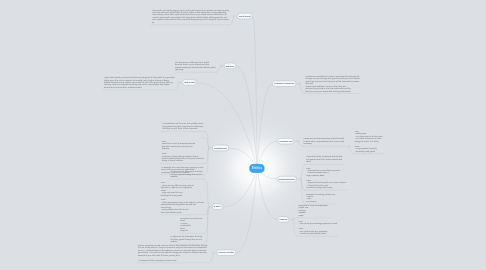Entities
by Azzer Bear


1. Manufacturers
1.1. Manufacturers are the ones that actually create the products and then ship them to retailers so that they can sell them to the customers.
1.2. .
1.3. Pros: Costs less to run the business because they don't need chains of stores for example. Cons: They have a lesser selling audience than a normal retailer would have as they are limited to selling to actual retailers.
1.4. An example of a manufacturing company is John Deere as they manufacture agricultural machinery to be sold at retailers.
2. E-Tailers
2.1. E-Tailers are the businesses that only sell their goods through the use of a website.
2.2. Pros: - There are very little running costs as they don't need to run any physical stores. - They only need to have buildings to store goods. Cons: - Older generations may not be able to use these services due to being unfamiliar with the technology. - Some people don't like to use their bank details online.
2.3. Examples of E-Tailers are: Ebay Amazon Woolworths Zavvi Play.com
2.4. E-Tailers are the businesses that only sell their goods through the use of a website.
3. Service Providers
3.1. Service Providers provide a service such as train tickets and information through the use of the internet. They can provide a range of information at competitive prices. A disadvantage is if the website is down, you wont be able to purchase your tickets. Also you wont be able to change your ticket to a different time for example if you cant make the train journey time. An example of this company is trainline.com
4. High Street
4.1. High Street retailers are the stores that will sell goods to the public at a generally higher price than online retailers but usually have a higher chance of being reliable because online retailers come with the risk of the goods being fake e.g clothing. They can compete by selling high value, customisable also maybe discounted products which customers want.
5. Economy
5.1. The Economy is suffering from a deficit because there is more imports and less exports leading to less tax which affects public spending.
6. Social Divide
6.1. Those with cash will be paying more and this will lead to their isolation as shops near-by will close down so they will have to travel further to the shops which means spending more money, Those with credit will be able to be more mobile which enables them to move to places with more shops, the house bound will be better off because they can have products delivered but this means that they wont go out as they will have no need to.
7. Consumer Led
7.1. Consumer Led Businesses buy and sell directly to each other using websites such as GumTree and eBay
7.1.1. Pros: - Better price - Can allow user to bid for items - Can allow customers to leave ratings for items and sellers Cons: - No guarantee of quality - Generally used goods
